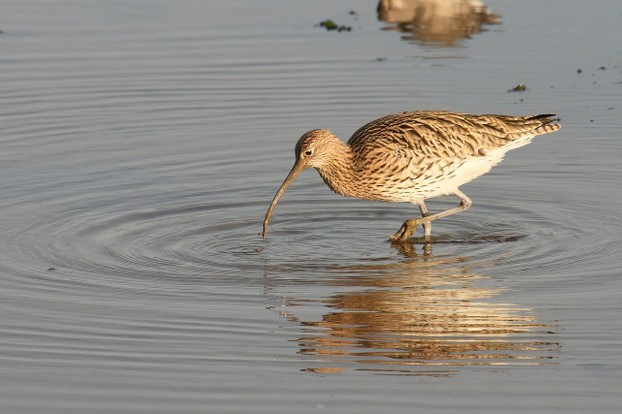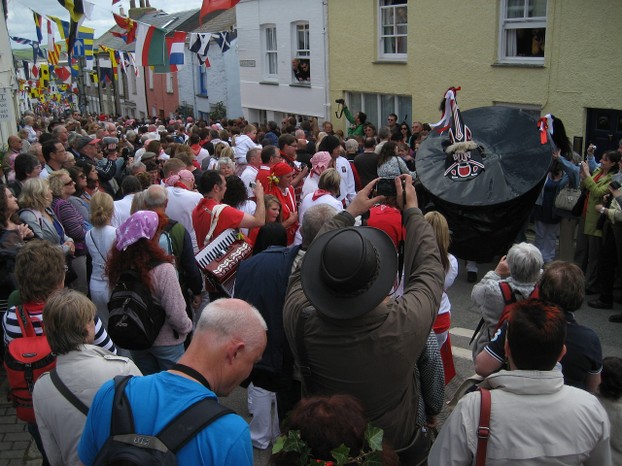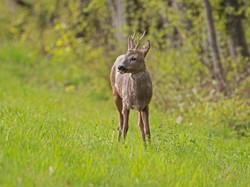The river gurgles out of the sodden ground of the unobtrusive hills of western side of rain-soaked granite fastness of Bodmin Moor. The spring from which it arises is on Hendraburrick, and as it begins its exuberant journey to its ultimate home in the sea it joins with several tributaries that drain North Cornwall, such as the river Amble. The valley is narrow and high-sided, a geographical feature that makes for a rapid rise in flood water levels in rainy periods.
In addition, there is a tidal barrage on the river Amble to prevent sea water flooding in during periods of low pressure, when ocean waters can flood up the small tributary. Yet in times when conditions are good the valley makes for good walking.
The path is well-made, It follows a route just above the bottom of the valley on an old rail track, which hails from the days when a steam train ran along the route. Those were the days when quarrying the local slate was good business that required heavy transport to move it to the docks at Padstow. The line also took tin from the mine in the valley. It was taken to the docks and ferried across the Bristol Channel, which separates Cornwall from South Wales, where there was a metal smelting capacity. As a community line it also ferried people to Padstow. But economics is a cruel task master, and while there is a surviving quarry, the tin mine was shut before the second world war. Eventually in the post-war period the line was modified. A steam train still provides a tourist attraction, but running alongside it is a well-made path that is suitable for pedestrians and cyclists. The path cuts its way through the tree-lined slopes of the valley. There used to be elms, until fungal disease killed off the mature specimens. Elms are vulnerable after they are six years old, so there are some young elms. We are hoping to introduce varieties immune to the disease, but there is still a long way to go with the elm. The wild service tree is also present in the valley, which makes it a part of Britain with a distinct flora.
The valley is designated an area of outstanding natural beauty, where the visual glories of nature are found alongside a peaceful ambience, and the only sounds other than the chugging of the steam train are the winds stirring the branches of the trees, the river flowing across its stony bed and the sounds of animals Sixty percent of the valley is grassland for cattle grazing, so cattle noises are sometimes evident. Yet the normally silent badgers dwell in their setts up the wooded slopes. The stream is a well-known trout fishery, and seabass are known to come into the estuary of the camel and make their way up stream. These fish are protected and no one may fish for them or take them away. But the curlew, a bird with a curved beak suffering serious decline in England, is found making its mating calls in Spring, and it can be seen feeding near the streams. Be assured that the curlew is highly protected.












 TheThousand Year Gardenon 11/26/2025
TheThousand Year Gardenon 11/26/2025
 Women of the Gospelson 10/11/2025
Women of the Gospelson 10/11/2025
 Religious Gardenson 08/25/2025
Religious Gardenson 08/25/2025
 Doctor of the Church: John Henry Newmanon 08/03/2025
Doctor of the Church: John Henry Newmanon 08/03/2025



Comments
The same as American railings, hot rolled steel.
Thank you for your comment below in answer to my previous, same-day observation and question.
Online sources associate Unitedstatesian metal railings with hot-rolled steel.
What kind do British Isles-ers make their metal railings from?
Hardwood, as it is more durable than softwood.
Thank you for your comment below in answer to my previous, same-day observation and question.
Online sources associate Unitedstatesian wooden sleepers with:
hardwood species such as beech, hornbeam and oak;
such softwood species as Douglas fir, larch and maritime, red, Scots and southern pines.
What wood predominates among British Isles-er wooden sleepers?
The metal railings are melted down and the metal reused. The wooden sleepers are sold off for a variety of purposes. Some are used to make raised beds in horticultural projects
Thank you for your comment below in answer to my previous, same-day observation and question.
It seems to me that there should be some possible final destinations for those disassembled tracks.
Would the aforementioned tracks be burned, build another railroad track, do duty in a railway history museum, go into a landfill or serve as recycled wood?
When a route is being converted from railway to footpath the railway is disassembled. All the tracks are taken up.
The third paragraph to the first subheading, Source, advises us that "The path is well-made, It follows a route just above the bottom of the valley on an old rail track, which hails from the days when a steam train ran along the route."
Do rail tracks stay in place or do they ultimately get disassembled?
I do not know of any such tale.
Thank you for your comment below in answer to my previous, same-day observation and question.
English Wikipedia associates St Petroc now with Bodmin and Little Petherick.
The aforementioned article describes St Petroc as depicted either with a wolf, for having tamed him in India, or, in the way of British saints, with a stag.
Is there a surviving folktale or legend or myth or tradition for invoking British saints with stags and stags with British saints?